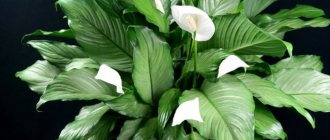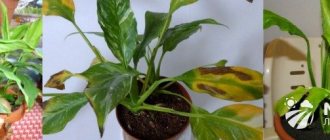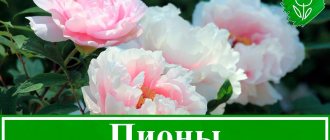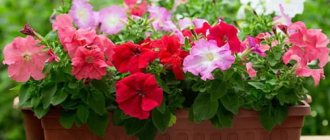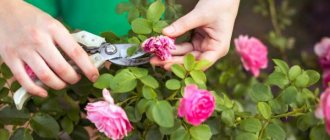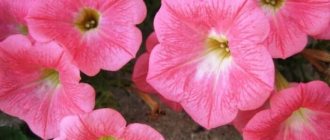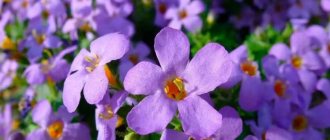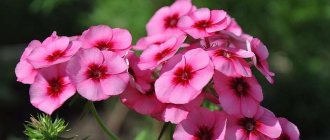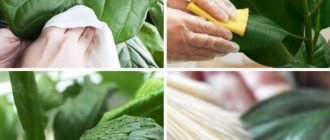Spathiphyllum is also called “Women’s Happiness”. One of the signs is associated with marriage. If spathiphyllum blooms in a girl’s room, this promises her an upcoming wedding. To wait for the appearance of “white sails” among the lush green leaves, the plant must be properly cared for. Timely watering, replanting, fertilizing - all agrotechnical measures will ensure the correct development and abundant flowering of the plant.
How to fertilize spathiphyllum and how often? These questions often arise among inexperienced gardeners. Answers to questions are in the article.
When does the “female happiness” flower need feeding?
For the first time after transplantation, there is no need to feed spathiphyllum , since all the nutrients are provided by the substrate. Subsequently, as a result of soil depletion, the flower begins to lack useful elements. This is expressed as follows:
- slow growth and limp leaves – magnesium deficiency;
- pale color, small leaves, lack of flowering – lack of phosphorus;
- yellowing of individual leaf fragments - need for calcium;
- wilting of the plant and the appearance of yellowness on the leaf blades - the need for complex feeding.
There are situations when you should not rush to apply fertilizers:
- when damaged by pests;
- during the adaptation period;
- during the cold season;
- in case of root rot disease.
Important! The optimal time for fertilizing is summer and spring, at this time the procedure is carried out once every 7 days.
Care Tips
At home, spathiphyllum will feel great on a western or eastern window, with enough diffused lighting. The main thing is to exclude drafts, which are destructive to the flower.
- Providing a dormant period in winter (with an ambient temperature no higher than +16) guarantees long and abundant flowering in summer. But year-round stay in the same conditions, on the contrary, can lead to a complete absence of flowering. In winter, the plant needs fresh air, but drafts at this time of year will lead to rotting of the plant's root system.
- Spathiphyllum does not tolerate dry air. The tropical climate is characterized by high humidity, and therefore it is also important to provide conditions at home that are acceptable for growth. Spraying with plain water works best. Better – soft (pre-infused) and warm. If in summer 1 procedure every two days is enough, then in winter spraying is more frequent - up to two per day.
- Don't get too carried away with fertilizing. Especially if the plant is already healthy and in great shape. In this case, it is better to underfeed than to burn the entire root system with excess fertilizer.
How to fertilize a plant for abundant flowering?
Organic and mineral fertilizers are used as fertilizing. The following components should be included in the nutritional mixture :
- nitrogen;
- phosphorus;
- potassium;
- sulfur;
- manganese;
- boron;
- copper;
- iron;
- manganese.
This is what is used to make spathiphyllum bloom beautifully; the plant should be fed with these elements twice a year. Solutions for very young specimens should not have a strong concentration.
Inexperienced flower growers are recommended to use liquid formulations , since in this case it is easier to calculate the required dosage.
Before use, store-bought fertilizers are diluted with water in the ratio specified in the manufacturer’s instructions. In this case, the water must be distilled or boiled. After complete dissolution of the product, spathiphyllum is watered, strictly adhering to the norm. For foliar feeding, the concentration of the drug is reduced.
The dosage for spraying a plant should be 2-3 times lower than that indicated on the package.
There are the following options for feeding spathiphyllum::
- Liquid fertilizers intended for use during the flowering period.
- Special compositions for aroids.
- Products produced in tablets.
- Universal fertilizers for indoor plants.
The most common include:
- Flower;
- Green house;
- Agricola;
- Garden of Wonders;
- Forte;
- Kemira.
- Azalea.
What household products can be used, and how to do it?
As a top dressing, you can use not only industrial products, but also those prepared independently at home. With the help of such compositions you can get excellent results.
Boric acid
Boric acid has the following effect on the flower::
- normalizes metabolic processes;
- increases chlorophyll content;
- increases immunity;
- stimulates flowering.
Boric acid is available in powder form, which is diluted in hot water in a ratio of 10 g per 250 ml of liquid. After this, the glass with the composition is stirred in 10 liters of water. The resulting product can be used for root and foliar (using a spray) fertilizing.
Ash
Ash is an effective potassium-phosphorus fertilizer containing more than 30 different microelements necessary for the growth and flowering of spathiphyllum. Feeding with ash solution is recommended in February .
You can get a solution by diluting 1 tbsp. l. ash in 1 liter of water, and mix well. Watering the plant is carried out at the root.
Ammonia
Ammonia contains 90% nitrogen and 10% ammonia.
It is these components that are necessary for the growth of spathiphyllum after leaving the dormant period. To prepare the drug you will need 1 liter. dilute water with 1 tsp. ammonia.
Fertilizing is carried out by adding a solution under the root , into pre-moistened soil. For foliar feeding, a spray bottle is usually used.
Important! Ammonia not only promotes plant growth, but also protects it from various diseases and pest attacks.
Important elements for growth and flowering
Spathiphyllum, like all plants, requires basic macroelements: nitrogen, phosphorus and potassium. Nitrogen is needed to grow vibrant, healthy greenery. If there is a shortage of it, the leaf becomes smaller and turns pale; if there is an excess, the plant stops blooming and “gets fat.” For flowering it is important to add phosphorus and potassium.
The flower also needs microelements. When using ready-made fertilizers, there is no need to introduce them additionally, since manufacturers usually include microelements in the complexes.
Both universal and specialized complex preparations are available for sale.
Fertilizing rules:
- During the period of active growth, nitrogen-containing compounds are added, and during the budding and flowering phase, phosphorus-potassium compounds are added.
- When applying fertilizers, both organic and mineral, using the root feeding method, the general rule applies - you must first water the soil with clean water so as not to burn the roots.
- You cannot feed a plant placed in bright sun, especially in a non-root (by leaf) way. Drops of solution on the leaves can cause a burn. For foliar feeding, a composition with a lower concentration of substances is prepared.
Do not fertilize flowers:
- just purchased or transplanted (you need to wait a month);
- sick;
- at rest.
Regarding the last prohibitory point, a reservation must be made. To ensure a full winter, many plants require a decrease in temperature. It is recommended to place spathiphyllum in a bright place, but not in the sun, maintain the temperature at 16...18 ℃, and provide regular ventilation without drafts. Watering at this time should be moderate, humidity is maintained by spraying.
At home, flowering continues in winter
Agree, not all flower growers have winter gardens, insulated loggias, balconies or verandas, where it is possible to achieve the desired air temperature.
It turns out that spathiphyllum, like other flowers, does not go into a dormant period, except that it needs to be watered a little less than in summer. The plant continues to grow green mass throughout the year, which means that fertilizers are still needed, although not in the same quantities as during the period of active growth and flowering.
How does fertilizing affect the watering regime?
Watering the flower is carried out as the substrate dries; usually the need for this procedure is indicated by the downturned corners of the plant leaves. Fertilizing should be done according to the schedule after the soil is moistened , which will prevent damage to the roots. When the soil is relatively moist, nutrient mixtures are applied simultaneously with the watering procedure.
Timely application of fertilizers, their correct selection and application strengthen the plant, thanks to which it pleases flower growers with its beauty for many years.
Watering rules
A rather moisture-loving tropical plant is what the “female happiness” flower represents. “How to care for it to bloom?” - a fairly common question among novice flower growers. However, professionals know that all tropical crops enter the flowering phase only if they receive enough moisture. The need for watering is indicated by the condition of the substrate. As soon as the top crust dries, it’s time to add water to the soil.
Despite the fact that the crop is moisture-loving, it should be watered with great care. The flower has an extremely negative attitude towards waterlogging, because this provokes the development of fungal infections inside the root system. To avoid accidentally overwatering the flower, you should carry out the procedure in small portions. As soon as you see that water has begun to accumulate in the pan, remove the watering can to the side. The drainage layer will also avoid waterlogging.
Many novice flower growers also ask the question: “The leaves on the “female happiness” flower are drying - what to do?” It is worth understanding that such a “symptom” is not always caused by insufficient watering. Sometimes the reason lies in dry air, and the gardener mistakenly begins to water the pot, which already contains a sufficient amount of moisture. To prevent this from happening, you should water the crop no more than 3 times a week in the summer and 1 time a week in the winter.
Advice from flower growers on fertilizing
To grow a healthy and profusely flowering spathiphyllum, it is recommended:
- in the phase of active growth and flowering, it is recommended to apply fertilizers or your own prepared fertilizers weekly;
- in the autumn-winter period, if the flower does not produce new buds, less nutrients are required. At this stage, it is enough to feed the plant once a month;
- The purchased plant should not be fed in the first 2 months, no matter what stage it is at. The lack of additional nutrition will help the flower quickly adapt to new living conditions. Similar rules apply to transplanted plants;
- Before feeding the flower, it requires abundant watering. A large amount of moisture will protect the roots of the plant from direct contact with fertilizers and will avoid burns and death;
- complex fertilizers not intended for spraying should be applied extremely carefully. Contact with the stem and leaves of the flower can cause a burn;
- It is better to fertilize on sunny days or with sufficient light. This will allow nutrients to be delivered to the root system more quickly and the incoming micro and macroelements to be better absorbed;
- It is prohibited to feed spathiphyllum if any plant diseases are detected. Any feeding is stopped until the flower has completely recovered.
Fertilizing spathiphyllum is one of the necessary stages of plant care. However, you should not add too many nutrients, as the accumulation of nitrates and other minerals can lead to its death.
Spathiphyllum requires regular application of fertilizer throughout the period of active growth and flowering from March to September. Without this, it is impossible to get lush flowering. The “Women's Happiness” plant is quite unpretentious, but it is still necessary to follow the care recommendations.
Timing and frequency of application
From the beginning of spring to the end of August, spathiphyllum requires mineral supplements that will help it properly emerge from winter dormancy. Dry complex fertilizers are diluted in a small dosage - 1 g per 1000 ml of water. The plant is watered first.
Note. Preliminary watering helps protect the root system from burns and ensures uniform distribution of nutrients.
Liquid specialized fertilizers are diluted according to the instructions indicated on the packaging.
Fertilizers must be applied regularly. The optimal regimen is twice a month. In winter, if the plant is kept at a temperature no higher than +16, no fertilizing is done at all. If the flower is warm, fertilizers are applied, but less often - once a month.
The importance of timely and correct feeding of spathiphyllum
The key to good development of spathiphyllum is proper care and timely feeding .
The life of a flower begins with planting in a nutrient mixture. Its composition includes leaf substrate, peat, manure humus, sand. A drainage layer of charcoal or ceramic chips is placed at the bottom of the pot.
This composition has everything necessary for development and feeding will not be needed in the coming weeks.
Store-bought spathiphyllum does not need to be fed for the first 2 weeks.
A flower recently purchased from a specialized store should not be fed in the first weeks - all the necessary elements have already been added, and the excess will not be useful.
When should you not apply fertilizer?
Fertilizers are not always beneficial to the plant; under certain circumstances their application is prohibited:
- If the spathiphyllum has just been purchased or transplanted into a new pot, it needs at least 2 months to adapt.
- Do not fertilize a sick or damaged plant.
- During the period of autumn-winter dormancy, feeding is excluded.
Spathiphyllum, being in captivity, cannot provide itself with the necessary conditions. In order for this exotic beauty to bloom profusely and be healthy, it requires proper care and timely, competent application of fertilizers.
Mineral fertilizers
They must contain a complex of chemical elements such as potassium, phosphorus, nitrogen . The presence of macro- and microelements in the form of iron, morastelibdenum, manganese and copper is necessary.
There are a number of universal compositions intended for the class of aroid plants, which include spathiphyllum.
There are fertilizers in the form of tablets , they have the required composition and a form convenient for use.
Liquid concentrated preparations are widely used It is enough to mix a capful of this liquid with a liter of water and the feeding is ready. These drugs are good to use during the flowering of spathiphyllum, it becomes abundant and lasts longer.
The use of special fertilizers and products for indoor flowers that do not contain lime has a good effect on the condition of spathiphyllum. For example, “Azalea”, “Flower”.
The drug Agricola is well suited for feeding spathiphyllum
The Agricola granular composition for flowering plants is suitable for this purpose. It includes a full complex composition of microelements. Dilute the required amount in a liter of water. The ratio of fertilizer and water is indicated in the instructions.
Before fertilizing the soil, it is necessary to thoroughly water it at room temperature . The same must be done after the process.
In addition to mineral fertilizers, the flower responds well to their alternation with organic ones. Mullein is usually used for this purpose. As a result, the flower will grow well, bloom on time and produce many large flowers.
Nitrogen fertilizers
Fertilizers that contain nitrogen are used in spring and until mid-summer. It is necessary for the splendor of leaves and their bright color.
You can use urea (carbamide). For this, 1 tsp. dry matter is mixed with 1 liter of water. Before fertilizing spathiphyllum, it must be well watered. This will help prevent the roots from being “burned” by nitrogen.
How to fertilize with mullein at home
To use this composition, you must maintain the correct proportions . Half a liter container is filled with mullein, the remaining space is filled with water. The mixture is stirred during preparation with a non-metallic object. Leave for 5 days.
After this, you need to mix the infusion with water in a ratio of 1:15 . The solution is immediately watered at the root of the flower. After absorbing the liquid, it is necessary to spill the soil in the pot with clean water.
You can feed spathiphyllum with mullein only in the correct proportion of solution.
Step-by-step instructions: how to carry out the procedure?
You can find out how to fertilize the “female happiness” flower below.
Natural remedies
Not all flower growers like mineral fertilizers; some prefer to feed spathiphyllum with natural products that they prepare themselves.
The most effective home remedies:
- Coffee grounds. After the coffee has been drunk, the grounds are not thrown away, but poured into the pot. Subsequently, when watered, the coffee grounds will release beneficial substances to the soil.
- Tea leaves are an excellent source of vitamins and microelements for spathiphyllum. After the tea is drunk, the tea leaves are dried and added to the pot, it works in the same way as coffee grounds.
- Banana peel.
Before use, the peel is dried and then ground into powder, after which it is embedded in the soil. You can also prepare an infusion from banana peels. To do this, pour the skin of one banana with a liter of cold water and leave for 24 hours. After which the product is filtered and added to the pot once every 12 days. - Nettle infusion. To prepare, fresh nettle greens are crushed and poured with a liter of boiling water, then infused for 24 hours. The resulting concentrate is diluted in the proportion of 100 g of infusion per 1 liter of water.
- Milk serum. Before use, the serum is diluted with warm water in a ratio of 1:10. After which the plant is watered at the root.
- Succinic acid is a powerful growth stimulator. To feed, 1 tablet of the product is dissolved in 1 liter of water. The plant is fed by the root method.
Ready-made products
Before use, ready-made fertilizers are diluted with water in the proportions indicated on the package. In this case, only boiled or distilled water should be used. After the product has completely dissolved, water the flower with it, strictly observing the norm.
When feeding with root fertilizers, the products are applied strictly at the root, avoiding contact with the leaves.
If the spraying method is used, the product is diluted in a weaker concentration. In this case, the dosage is reduced by 2-3 times compared to that indicated on the package.
Preparations for feeding spathiphyllum:
- Special fertilizers “For aroids”.
- Universal products for indoor plants.
- Tablet preparations containing basic elements and trace elements.
- Liquid fertilizers for flowering.
The most popular of them:
- Bona Forte.
- Green house.
- Garden of Miracles.
- Master.
Potassium uses
Potassium plays an important role in the process of plant growth and development . It ensures photosynthesis and oxidative reactions in cells, protein-carbohydrate metabolism, and increases the resistance of plants to unfavorable living conditions.
To achieve long-term flowering, a sufficient content of potassium elements in plant tissues is necessary.
Among the potassium fertilizers used in floriculture, the following are known:
- Wood ash.
- Potassium sulfate.
- Potassium nitrate.
However, the use of pure potassium compounds is not justified. This element alone cannot provide adequate nutrition to the plant. It is more convenient and simpler to use complex formulations that contain all the necessary elements.
When does spathiphyllum bloom?
This only happens with proper care . The flower does not like cold water when watering, low room temperature, lack of light, or lack of nutrition.
Spathiphyllum blooms only with proper care
A large pot may also be the reason for its reluctance to bloom. When the roots fill all the space inside the pot, flowers will appear. For this, a young plant must take root well and grow.
What role do nutrients play in the flowering process? To activate it, you need to use mineral fertilizers.
During the active period from March to September, we feed the flower with complex fertilizers at intervals of 15 days. Nitrogen must be present at the beginning of the growing season for the growth of green mass. During the flowering period, a predominance of the elements phosphorus and potassium is necessary.
Excess nutrition is as harmful as its deficiency. At the same time, brown spots appear on the leaves of the plant. To improve the health of a flower, you need to stop feeding it and just water it. After a month, it should return to normal.
If the leaves of a flower darken along the edges, then turn black and fall off, a lack of nutrition is obvious. Applying complex fertilizers at home in the required quantities will change the situation for the better. The plant will begin to come to life.
To ensure flowering does not stop for a long time, do not forget to remove faded shoots.
It is important to remove faded spathiphyllum shoots in a timely manner.
This should be started when the petal changes color from white to pink or greenish. So it's time to remove it to make room for others.
There is another interesting way to make spathiphyllum bloom, this is to give it an artificial rest period .
For a while, the pot is placed in a cool, shaded place and watering is reduced . This should continue for several weeks. Then the plant is returned to a warm, bright place, watering is increased and a complex of fertilizers is applied.
When growing flowering plants, you must follow these rules :
- Avoid excess fertilizer.
- Feed during the active growth period.
- Reduce fertilizing in winter.
- Do not feed flowers in hot weather.
- Prevent solutions from getting on the leaves.
- Water young plants with a weak solution of fertilizers.
- The composition of fertilizers must correspond to the growth phase.
- Water the soil in the pot before and after fertilizing.
Proper care will allow you to grow a beautiful, healthy plant that will be a pleasant decoration for any room.
When growing plants at home, they need to be fed periodically, since in the limited space of a flower pot the soil is gradually depleted. Fertilizer for spathiphyllum and the frequency of the operation are selected in accordance with the stage of development of the indoor flower, its appearance and condition. The crop requires a regular supply of mineral nutrients; fertilization with organic matter should be rare.
Symptoms of malnutrition in spathiphyllum
The lack of nutrients affects the condition of the plant. You can determine which elements spathiphyllum lacks by external changes:
- Small pale leaves are the first symptom of nutritional deficiency.
- Slow growth, lethargy of flowers, yellow leaves indicate a lack of magnesium and iron.
- If a plant does not bloom for a long time, then it lacks phosphorus.
- When leaf blades turn yellow unevenly, the flower needs boron and calcium.
- Spathiphyllum begins to fade after flowering due to the depletion of reserves - a nutritional complex is needed here to restore strength.
Nutritional requirements
Unlike many plants, spathiphyllum does not need a large amount of nitrogen for the growth of green mass; this prevents budding and flowering. A small amount of the nutrient must be supplied to the root system, since it participates in metabolic processes with other minerals, but it is often sufficiently supplied with complex mixtures. For this reason, the crop does not require regular fertilizing with organic matter.
When grown at home, spathiphyllum must be fertilized with compounds containing the following minerals:
- potassium;
- phosphorus;
- calcium;
- iron;
- boron;
- magnesium;
- manganese;
- copper;
- sulfur.
During active growth
The crop needs additional nutrition throughout the entire active growing season. The frequency of feeding is 2 times a month, starting in spring. An exception is the recent acquisition or transplantation of spathiphyllum, flowering. It is important to monitor the condition of the indoor flower and, if necessary, feed it with microfertilizer containing the missing nutrient using a foliar method. In other cases, spraying the aerial part with a nutrient composition is not necessary.
At the beginning of spring, spathiphyllum requires nitrogen; in the future, emphasis should be placed on potassium-phosphorus compounds.
Dilute fertilizers according to the instructions with boiled water. Feed the flower after abundant watering, directing the liquid under the root, avoiding getting on the leaf blades.
Having noticed signs of a lack of other elements, women's happiness should be fertilized with the appropriate substance:
- magnesium – delayed growth and development, wilting of the aerial parts;
- phosphorus is a healthy plant, but there is no flowering for a long time;
- boron and calcium - uneven yellowness of leaves;
- iron – chlorosis of leaf blades;
- complex nutrient deficiency – small and pale leaves.
During the flowering period
After the flowers appear, feeding spathiphyllum is not recommended, since adding nutrients will negatively affect the condition of the entire plant. It is important to apply complex fertilizer after this period so that the indoor flower can recover. A flowering crop must receive the necessary nutrition before the buds open, so that after the bush has bloomed, the process lasts as long as possible.
What fertilizer is suitable?
Fertilizing is applied with mineral fertilizers and organic matter at the root, avoiding contact of the solution with the leaves. Spraying the leaves is used as a last resort when the plant dies.
Fertilizer is selected in a specialized fertilizer store for different plants that form flowers. Suitable mixtures are for Azaliaceae and Araceae, as well as the “Garden of Miracles” and “Green House” brands of fertilizer.
Universal liquid formulations
Such fertilizers are quite famous among flower lovers. Fertilizers are ideal during the budding period, it becomes long and abundant.
Features of application:
- Only boiled water is suitable for diluting the mixture. One cap of the mixture is mixed with a liter of water and you’re done;
- before applying fertilizer, moisten the soil and water it with fertilizer strictly under the root, avoiding the solution getting on the foliage;
- feed with liquid mixtures strictly according to schedule so as not to oversaturate the flower with nutrients.
Special fertilizers
Any fertilizer for the Aroid class is suitable for the flower. This can be either a liquid, tablet or powder type of fertilizer.
Fertilizing for spathiphyllum
Names of popular fertilizers for statyphyllum:
- "Garden of Miracles"
- "Green house".
- "Helatin."
- "Nitrophoska".
- Bona Forte.
Mineral mixtures
The mixtures must contain a full range of vitamins and macro- and microelements: especially nitrogen and phosphorus. Iron and potassium are also important for nutrition; they contribute to good growth of spathiphyllum and long-term flowering of the plant.
Features of choosing fertilizers:
Feeding for a flower is chosen based on its needs and stage of growth.
Before flowering
Nutrient mixtures should contain: potassium and phosphorus. Fertilizer for spathiphyllum for flowering is diluted according to the instructions: 1 gram per liter of boiled water. Before flowering begins, increase the number of nutrient applications - 2 times every 7 days.
At this time, organic and mineral mixtures alternate. For example, you can combine mullein and Agricola.
Fertilizer for plants during the flowering period
During the flowering period
During flowering, the plant does not need additional feeding if proper feeding was carried out before the set of buds.
In winter, with simultaneous budding, fertilizer is applied under the root once a month.
Optimal mineral complexes
An ideal universal option would be fertilizers for Araceae and Azaliaceae. It is better to use liquid formulations, “Garden of Miracles”, Bona Forte.
The best organic matter for the plant
In addition to mineral mixtures, spathiphyllum tolerates organic matter well: mullein, humus. They activate the necessary metabolic and biochemical processes in the flower. Compost or humus contains a balance of vitamins and microelements for spathiphyllum.
Dry horse manure, bird droppings, and mullein are ideal for fertilizing the plant. A high concentration of nitrogen in fertilizing can harm the flower, so it is necessary to dilute it with water in a ratio of 1:40.
Cow manure is diluted in a ratio of 1:20, it is applied by the root method.
It is important to carefully apply all organic fertilizers at the root, otherwise the foliage will grow and flowering will not occur.
Mineral fertilizer complex for plants
How to feed spathiphyllum
Organic matter is rarely used as fertilizer for this crop. It is permissible to water an indoor flower with an infusion of mullein, manure or bird droppings in a concentration of 1:30 in the spring so that at the beginning of the active growing season the plant increases its green mass. As a good fertilizer for spathiphyllum at home, ready-made mineral complexes for indoor plants, as well as products prepared according to folk recipes, are used.
When choosing a nutritional mixture, you should focus on the composition in order to avoid a deficiency of some nutrients and an excess of others. For this reason, ready-made special preparations are suitable for the flower. From time to time it may be necessary to use microfertilizers, the solution of which is sprayed on the above-ground part.
Spathiphyllum rarely needs foliar feeding, but if there is a severe deficiency of any nutrient, only it will help. For example, a solution of boric acid, iron chelate, is used.
Fertilizer selection
Ready-made complex mixtures for flowering plants are produced in the form of a solution, tablets, powder, granules, and sticks. The most common forms are liquid and powder. It is important to strictly adhere to dosage recommendations so that excess active ingredients do not burn the root system of the flower. Properly selected mixtures containing potassium and phosphorus are necessary for abundant flowering of the crop at the stage of bud formation.
Fertilizers for spathiphyllum:
- Flower;
- Agricola;
- Biopon;
- Forte;
- Joy;
- Garden of Wonders;
- Green house;
- Master.
Agricola
Biopon
Joy
Forte
Organic fertilizing can be done using ready-made products. For example, fertilizer for spathiphyllum BTO in the form of granules and powder is produced by biofermentation of raw materials of animal and plant origin with the addition of 11 families of soil bacteria. The composition nourishes the bush without disturbing the soil microclimate for a long time, ensures growth increases by 2-5 times, as a result, the flower receives everything it needs for flowering and beautiful leaves. The advantage of the finished product is that it is sterile and does not contain pathogenic microflora and parasite larvae.
How to fertilize Women's happiness?
Ready-made mineral fertilizers are applied mainly by the root method. Spraying is used in emergency cases when the plant dies.
Today, mineral fertilizers are produced in the form of:
- tablets;
- powder;
- sticks;
- granules;
- solution.
Beginning flower growers are recommended to use liquid fertilizers to avoid errors in dosages. For spathiphyllum, it is preferable to buy fertilizers that are suitable for flowering plants; their composition is dominated by potassium and phosphorus. You can also buy universal products or special ones for Aroids or Azaleas. The following brands have proven themselves well:
- "Garden of Miracles".
- "Bona Forte".
- "Master" for flowering plants.
- "Green house".
Use nutritional components as follows.
- These mineral preparations are diluted with water in accordance with the proportion indicated on the package. Approximately 1-2 caps per liter of liquid.
- Use only boiled or distilled water.
- Moisten the soil before use.
- Water the resulting solution strictly at the root, avoiding contact with the leaves.
- After fertilizing, moisten the soil again.
- Fertilizing according to the schedule will make it easier to avoid oversaturation of nutrients.
Many experts also advise using self-prepared nutritional mixtures. What home remedies should you use to feed the plant? There are many recipes suitable for feeding spathiphyllum, for example, infusions of:
- banana peel;
- citrus peels;
- onion peel;
- whey;
- brewer's yeast, etc.
Attention! Before use, these mixtures are diluted with water to reduce the concentration, and watered under the root of the flower.

